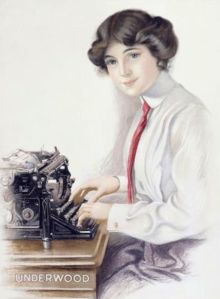Narrative is one of those flexible words. The basic meaning is the same as a story, but narrative can be use as a noun or as an adjective. it is an account of events, experiences and details. But as an adjective, narrative describes the style of the story being told. A good narrative means in part a good style in the story and style matters.
I’m teaching my workshop on showing and telling in February for Outreach International Writers, and I’ve also been reading The Paper Magician, which is a wonderful book to illustrate great narrative, which relies on really excellent telling mixed with showing. That’s right–it’s not only show your characters to the reader.
Now, too much narrative can indeed slow the pace of any story–but it is also useful to set the pace. That includes the details that make up the style. Style is partly a matter of work choice, and also how do you structure your sentences, and how do the paragraphs connect and flow. What are the modifiers you use–are they fresh and specific? Do you vary sentence structure, using shorter sentences to speed action and longer to slow the reader? What words to you choose to set the mood for not just the scene but the entire story? All these details matter.
You may not be too concerned with style when you are just trying to get words on the page and get started, but it’s something to look at as you edit and revise. The style of the story is what pulls in a reader–this is your writer’s voice.
There is a danger here–too much style can become a burden to the reader. This is where the writing gets “writerly”–the writer is drunk on words and this can trip up readers, throwing the reader out of the story. Sometimes the right word is an unusual word–sometimes the unusual word is just the writer getting in the way of the story. This is where the phrase “kill your darlings” can be helpful. It’s a lot like choosing the style of your clothes. That extra watch or scarf or colorful hat may be the right touch–or it may just be one step too far over the edge. But we are back to style. There are writers who can take things far too far and still make it work.
Narrative is all about the details. Is the sky black or inky? Or purple edged? Or pale blue-white, dotted with fluffs of gray? Those are the details that put the reader into the world, and that’s all about telling the reader those exact details. Don’t forget to layer specific details that weave into the style–the sense of smell is one of the strongest to evoke an emotion. Sounds can also act to bring in mood and emotion onto the page. We all have good and bad connotations associated with sounds. Taste and touch are also often neglected as “telling” details that help put the reader into the world. Smells can connect to a taste, bringing in a a bitter taste or a anticipating taste of something delicious. Touch puts the reader in touch with the world–the air, the weather, the heat, the chill, and all the reactions to the setting.
Again, this goes back to style. Some writers have a sparse style–the focus is more on dialogue and action and more on showing. Others have a talent with description and can weave a spell that keeps the reader going. Part of this is about the genre of the work Stories set outside the normal world tend to need more details–and often a slower pace that appeals to the reader–to bring the reader into the world. While action-based stories usually put the action first. It’s all about knowing what is your writing style, and using what you’re good at.
That all starts with being able to know how to show the character to the reader, but also knowing how to use great telling to pull the reader into the fictional world. More on that in February.



 One of the most important things to think about when you open any story is—what are you SHOWING the reader about that character? You want to remember that what you TELL the reader doesn’t matter as much as what you SHOW.
One of the most important things to think about when you open any story is—what are you SHOWING the reader about that character? You want to remember that what you TELL the reader doesn’t matter as much as what you SHOW.






